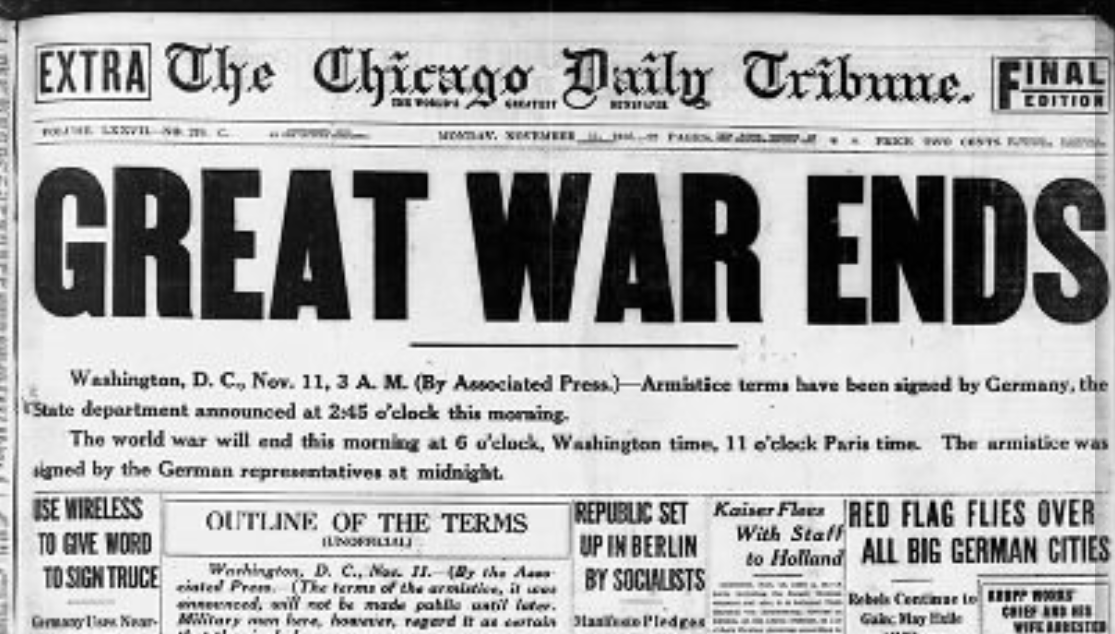
The CPI changed how Americans consumed media by creating a communications formula to saturate the market with its message. Across the country everyone heard the same message everywhere they turned.
However, the CPI’s questionable methods, including restricting media access, fabricating stories, and censorship triggered a new cynicism and mutual distrust between government and the media. "The CPI's co-opting of patriotism and fear in the service of crude and oversold political goals had not only changed the American public’s relationship with the concept of propaganda, but also permanently diminished public trust in government." - Nick Fischer, "The Committee on Public Information and the Birth of US State Propaganda" (July 2016) [1]

"Great War Ends." The Chicago Daily Tribune, 11 November 1918.
The Allies declared victory on November 11, 1918. The CPI began to wind down, but continued limited activity until June 30, 1919, including advertising Victory Loans for post-war funding, the foreign press bureau, and the Official Bulletin. The CPI succeeded against all odds to make an unpopular war popular.
"The CPI had exerted a great impact, and [post-war commentators] either heralded it or blamed it for being able to whip up the spirit of '100% Americanism' that pervaded wartime and postwar American culture." - Emily Rosenberg, "War and the Health of the State: The U.S. Government and the Communications Revolution during World War I" (27 June 1917) [2]
In hindsight the American public realized the CPI’s communications blitz had manipulated them and oversold the conflict. Post-war, America returned to its isolationist attitude. In a 1937 Gallup poll, 64% of Americans called WWI involvement a mistake.
Header image: "U.S. Army General John J. Pershing, center, inspects French troops at Boulogne, France.” AP Images, 13 June 1917.
[1] Fischer, Nick. “The Committee on Public Information and the Birth of US State Propaganda." Australasian Journal of American Studies, July 2016, vol. 35, no. 1, The State and US Culture Industries, pp. 51-78.
[2] Rosenberg, Emily. “War and the Health of the State: The U.S. Government and the Communications Revolution during World War I.” The Presidency and Public Opinion in the American Century, (pp.48-66), University Press of Florida, 27 June 2010.